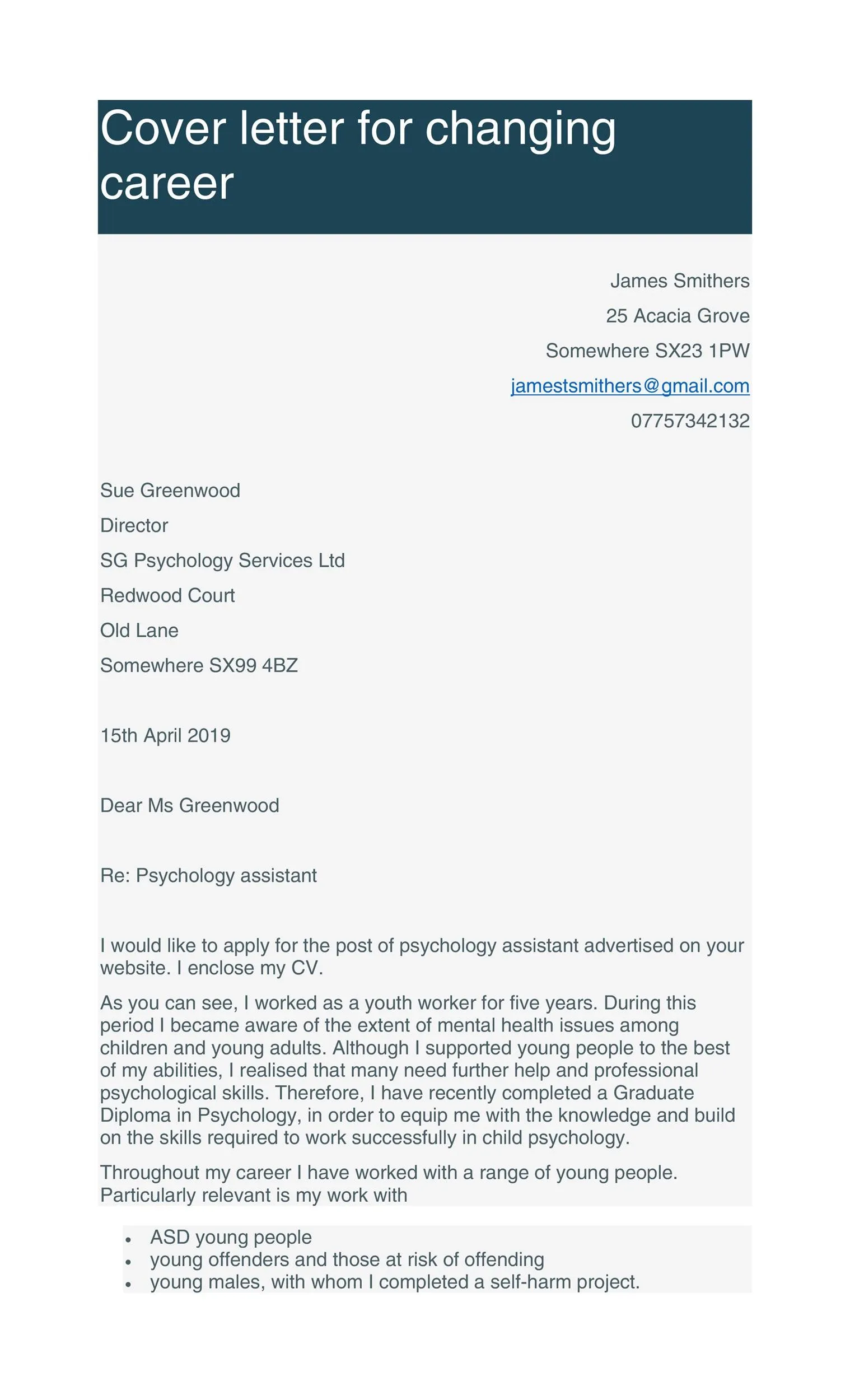What is a Career Change Cover Letter
A career change cover letter is a crucial document when you’re pivoting to a new field. Unlike a standard cover letter that simply reiterates your resume, this letter must explain your motivations, highlight transferable skills, and demonstrate your suitability for a role that may seem outside your previous experience. It’s your opportunity to convince a potential employer that your skills and experiences, even if not directly aligned, are valuable and relevant to their needs. This requires careful crafting and strategic communication to bridge the gap between your past career and your desired future. It should clearly articulate your goals and demonstrate your understanding of the new industry or role. The primary goal of this letter is to secure an interview by showing how your background can benefit the new position.
Why a Career Change Cover Letter is Important
In the competitive job market, a well-written cover letter can significantly increase your chances of getting noticed. For those changing careers, this is even more critical. It provides context for your application, explaining your career shift and highlighting how your skills are transferable. It allows you to address any potential concerns the employer might have about your lack of direct experience. Without a tailored cover letter, your application could be overlooked, as recruiters might not immediately understand the value of your background. A strong letter demonstrates your enthusiasm and commitment to the new field, setting you apart from other applicants. The cover letter serves as your advocate, making the case for your candidacy and showing how your unique experiences can contribute to the company’s success.
Highlight Relevant Skills
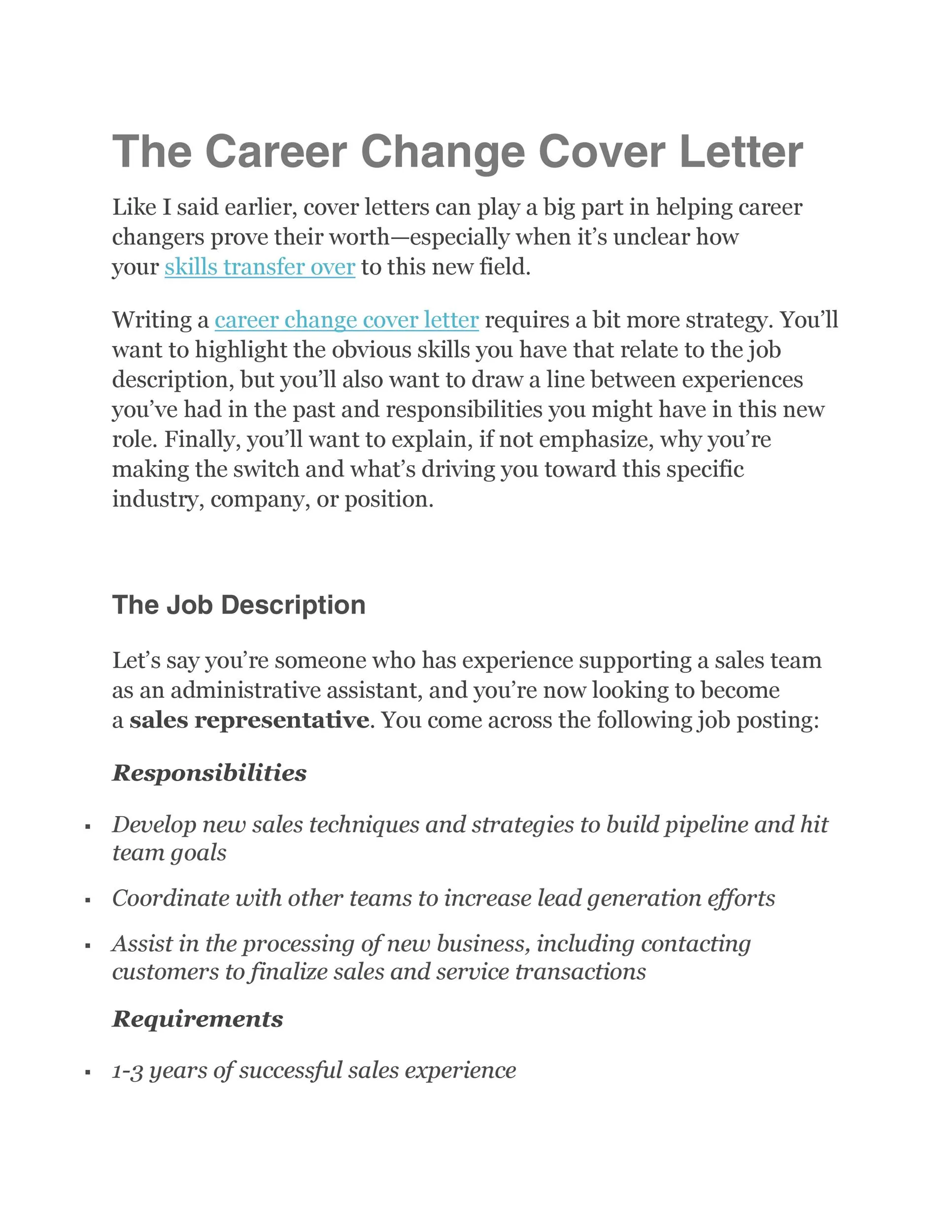
Identify the skills that are most relevant to the new role. Even if your previous job was in a different field, many skills are transferable. These may include communication, problem-solving, leadership, project management, or technical skills. Provide concrete examples of how you used these skills in previous roles. This helps the hiring manager see how your existing skills translate to the new position. Avoid simply listing skills; instead, demonstrate them through specific achievements and experiences. This approach is more compelling and shows that you can deliver results. By highlighting these skills, you are effectively positioning yourself as a strong candidate. Ensure your examples are concise and easy to understand, focusing on the impact of your actions.
Tailor Your Cover Letter
Customize your cover letter for each job application. Generic cover letters are easily recognizable and often discarded. Research the company and the specific role to understand their needs and expectations. Use keywords from the job description to demonstrate your understanding of the role and company. Address the hiring manager by name if possible. Showing that you’ve taken the time to learn about the company and tailor your letter demonstrates your genuine interest. Tailoring also allows you to address specific requirements and demonstrate how your skills and experiences align with those needs. This will make your application stand out and showcase your attention to detail. Customization shows that you value the opportunity and are not just sending out a generic application to numerous places.
Essential Elements of a Cover Letter
Your Contact Information

Start your cover letter with your contact information. This includes your full name, phone number, email address, and optionally, your LinkedIn profile URL. Ensure this information is accurate and professional. Your contact information should be easily accessible and at the top of the document. Use a professional email address and double-check that your phone number is correct. This will allow the hiring manager to quickly contact you. Make sure it matches your resume to maintain consistency. Correct and accessible information indicates you are organized and professional, making it easier for the employer to reach out to you.
The Opening Paragraph
The opening paragraph is your first opportunity to grab the reader’s attention. State the position you are applying for and where you found the job posting. Briefly mention your career change and express your enthusiasm for the opportunity. Clearly state why you are interested in this role and the company. Make it clear that you are not just applying for any job, but this specific role. The opening paragraph should be concise and compelling, quickly capturing the reader’s interest and setting the tone for the rest of the letter. Make a strong first impression by demonstrating your passion and understanding of the position.
Body Paragraphs Showcase Your Skills
The body paragraphs are where you highlight your skills and experiences. Use specific examples to demonstrate how your past experiences relate to the new role. Focus on transferable skills and quantifiable achievements. Use the STAR method (Situation, Task, Action, Result) to provide detailed examples of your accomplishments. Show how your skills align with the job requirements mentioned in the job description. The body paragraphs should be well-organized and clearly communicate your value. Each paragraph should focus on a specific skill or accomplishment. Use action verbs to describe your contributions and the positive outcomes. This will make your experience more engaging and demonstrate the value you can bring to the new role.
Closing Paragraph Express Enthusiasm
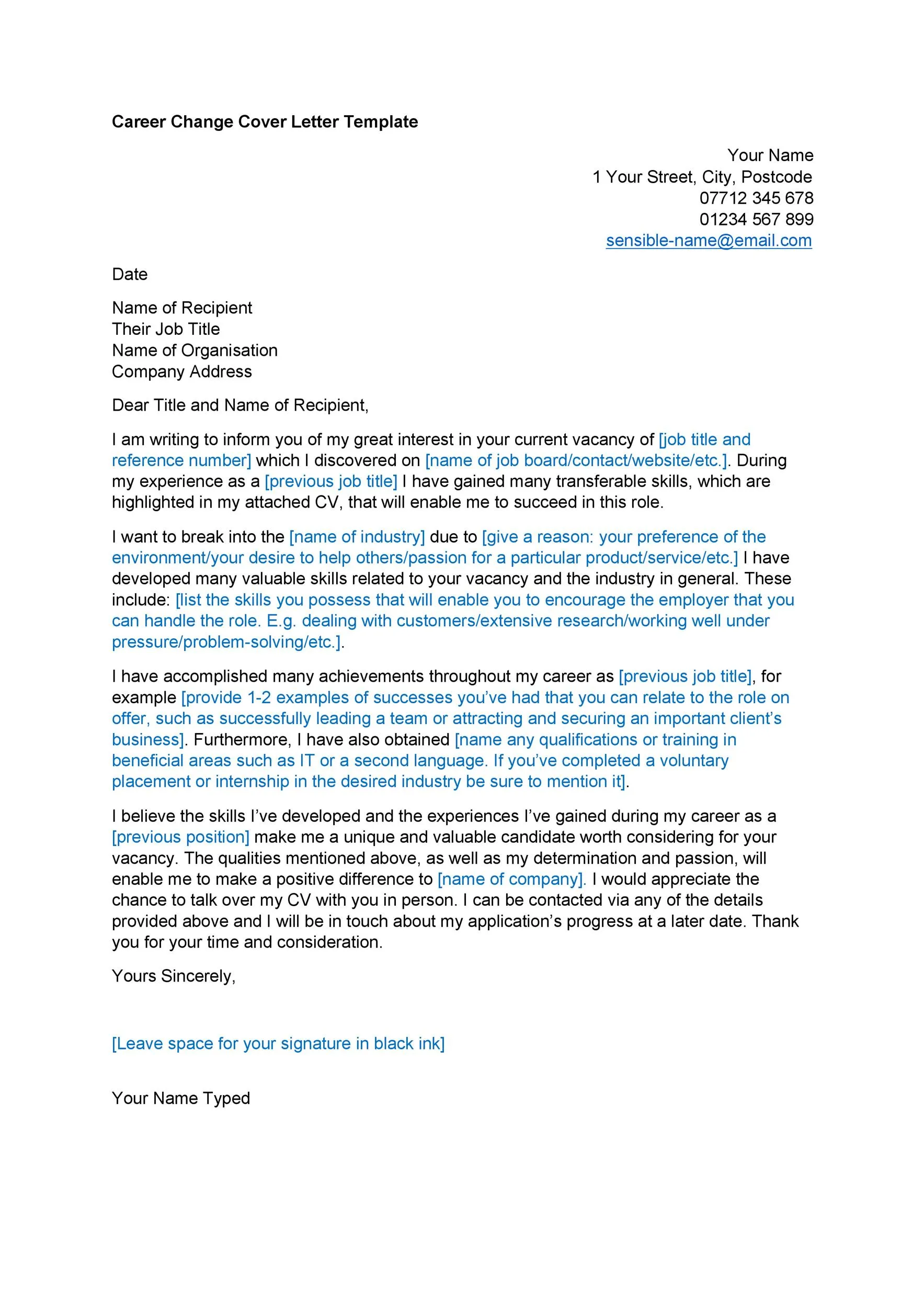
The closing paragraph should reiterate your interest in the position and the company. Summarize why you are a good fit and express your enthusiasm for the opportunity. Include a call to action, such as requesting an interview. Thank the hiring manager for their time and consideration. Keep it concise and professional. It should leave a positive lasting impression and encourage the hiring manager to contact you. Make sure to proofread the entire letter before submitting it. This will increase your chances of getting an interview.
Format Your Cover Letter
Choose the Right Font
Choose a professional and easy-to-read font. Common choices include Arial, Calibri, or Times New Roman. Ensure the font size is between 10 and 12 points. Avoid overly decorative fonts that can be difficult to read. Maintain a consistent font throughout the document. The font should be clear and accessible for all readers. Using an appropriate font enhances readability and professionalism. A well-formatted letter makes a positive impression and ensures the hiring manager can easily read your information. This helps to create a positive first impression, which is essential for securing an interview.
Maintain a Professional Tone
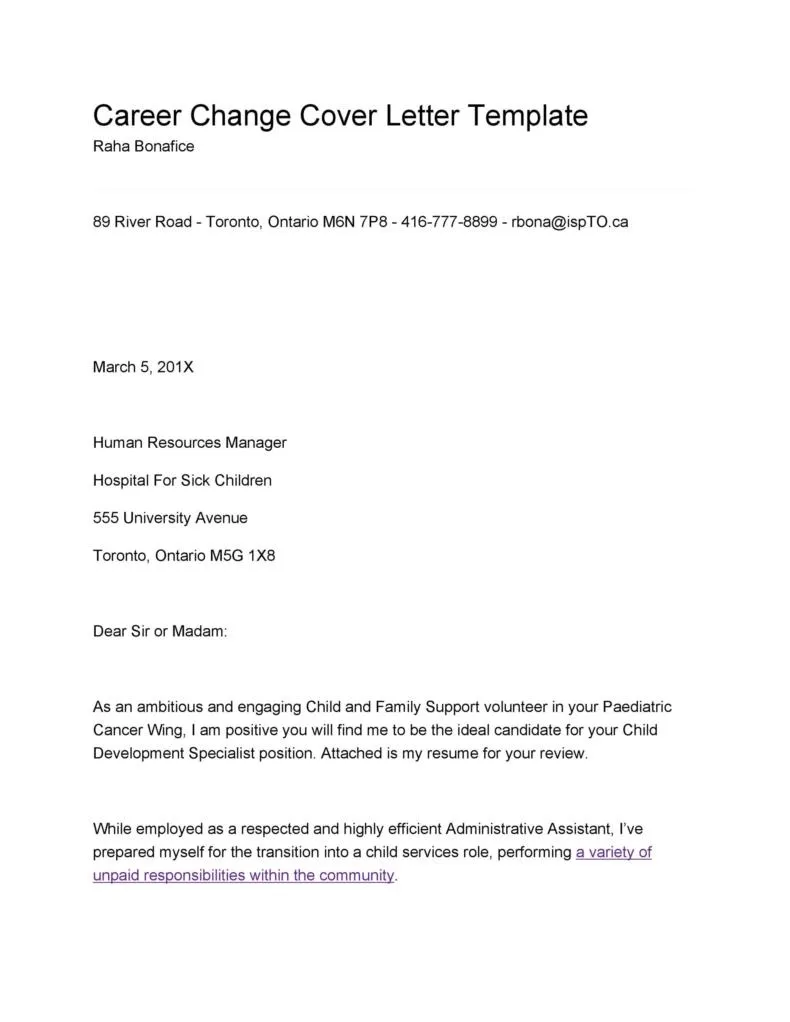
Use a professional and formal tone throughout your cover letter. Avoid slang, jargon, or overly casual language. Address the hiring manager correctly and use proper grammar and punctuation. Keep the language concise and direct. A professional tone shows respect and demonstrates your attention to detail. Ensure your cover letter reflects your seriousness about the role. It’s best to use a formal tone in your writing. Proofread your letter to ensure your tone comes across the way you want.
Proofread Carefully
Proofreading is an essential step in the cover letter writing process. Carefully check for any grammatical errors, typos, and inconsistencies. Use a spell-checker and grammar-checker, but also read the letter aloud to catch any awkward phrasing. Ask a friend or family member to review your cover letter for a fresh perspective. Proofreading ensures your cover letter is polished and professional. A polished letter shows attention to detail and a commitment to quality. Thorough proofreading helps avoid making a negative impression and ensures your qualifications are accurately communicated. Catching mistakes can greatly impact your chances of getting hired.
Career Change Cover Letter Template
Template Structure Contact Information
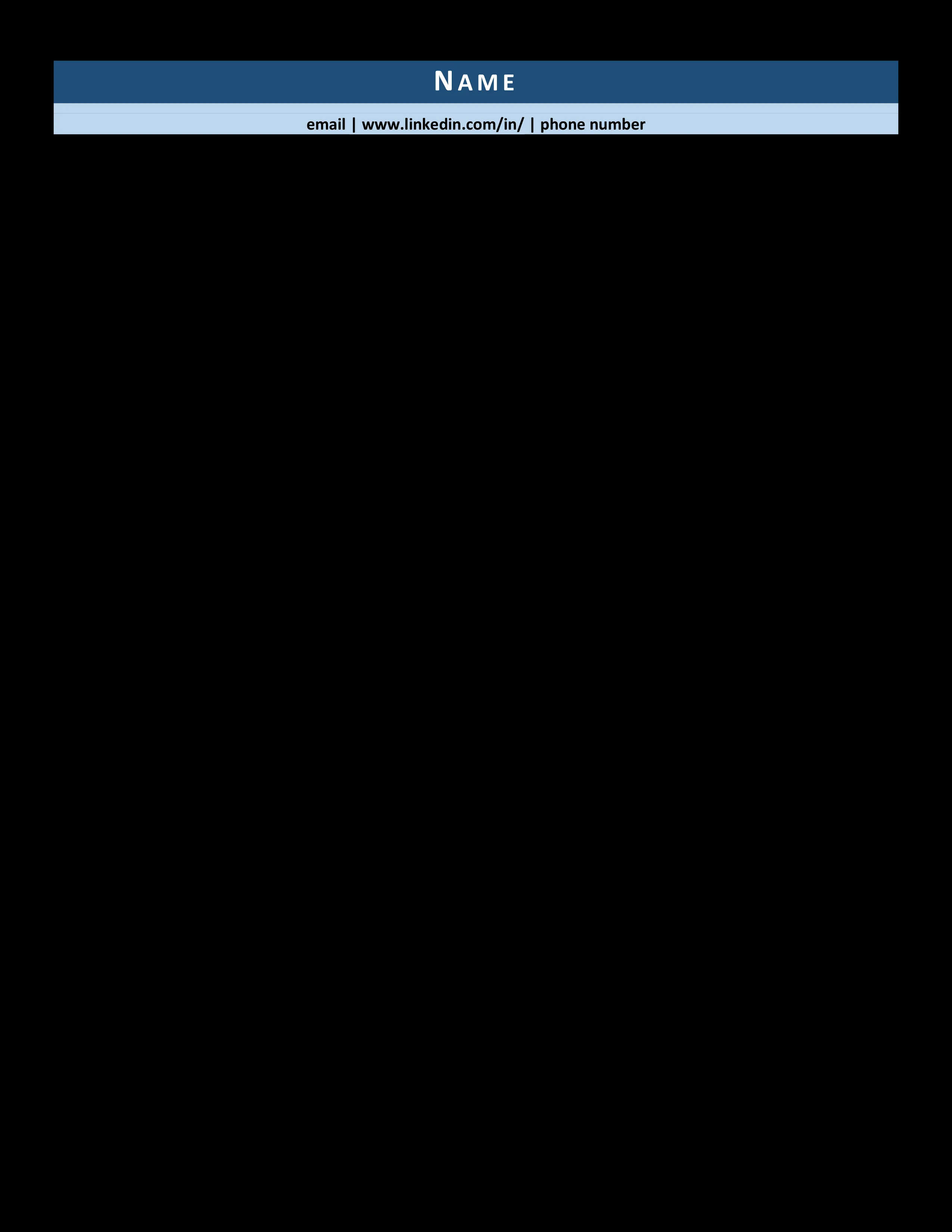
Include your full name, phone number, email, and LinkedIn profile URL at the top. This should be the first thing the hiring manager sees. Ensure your information is easily accessible. Maintain a professional format for your contact details. Make sure that it corresponds to what you’ve already put on your resume. The contact information section makes it simple for the hiring manager to contact you. It’s best practice to use a professional email address and ensure that the information is accurate.
Template Structure Greeting
Address the hiring manager by name if possible. If you can’t find the name, use a professional greeting like “Dear Hiring Manager.” Avoid generic greetings like “To Whom It May Concern.” Demonstrating that you know the name of the hiring manager is a great way to grab their attention. Use a professional tone throughout your greeting. Use the company’s name in the salutation if possible to personalize the letter and create a great first impression.
Template Structure Body Paragraphs
This section should include a brief introduction, outlining your career change and expressing interest. Then, provide detailed examples of how your skills and experience translate to the new role. Use the STAR method to showcase your accomplishments. Focus on transferable skills and quantify your achievements. Be sure to maintain a clear and organized structure. The body paragraphs should be the primary way you communicate your suitability for the position. Maintain your professional tone and avoid jargon.
Template Structure Closing
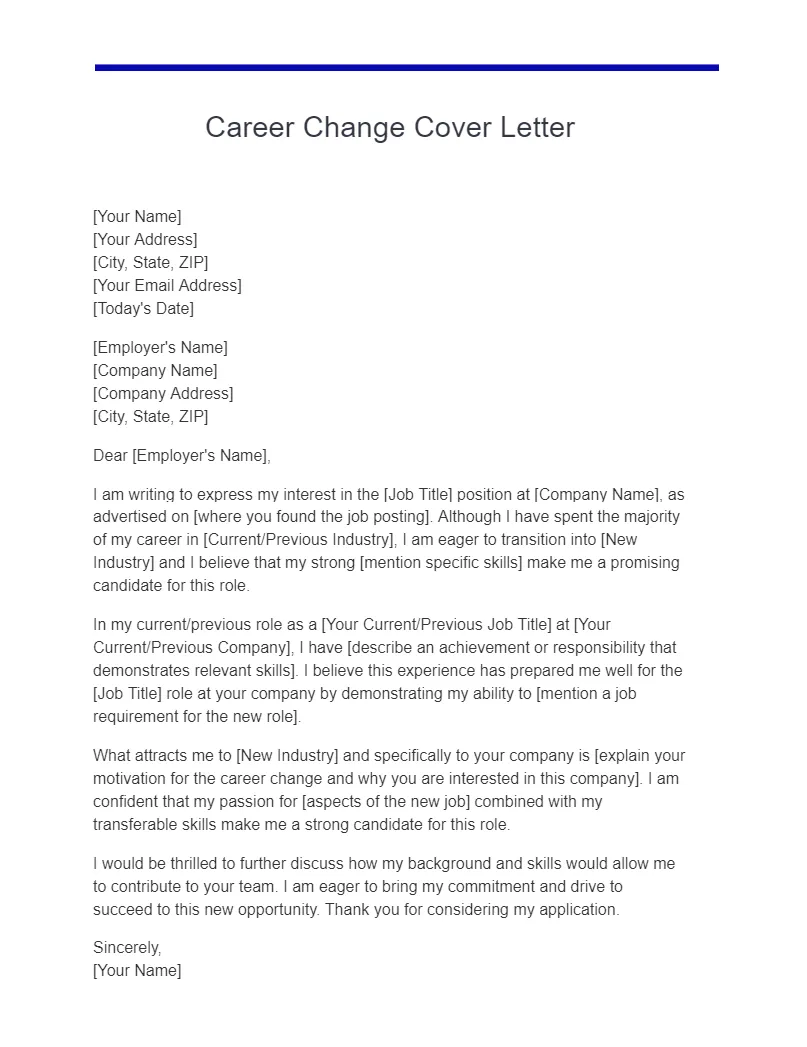
Reiterate your interest in the position and thank the hiring manager for their time. Include a call to action by requesting an interview. This is also your chance to show your excitement. Ensure a professional closing such as “Sincerely” or “Best regards,” followed by your name. A well-written closing paragraph leaves a lasting positive impression. It should reinforce your key qualifications and reiterate your eagerness for the role. Your closing should match the tone of your opening. Make sure that you proofread everything carefully before sending.
Tips for Writing a Great Cover Letter
Research the Company
Before writing, research the company thoroughly. Understand their mission, values, and recent projects. Tailor your cover letter to align with the company’s culture and needs. Mention specific company initiatives or projects you admire. This demonstrates your genuine interest and shows that you are not just sending out a generic application. Showing your knowledge about the organization makes a strong impression. Mentioning specific details from the company’s website or news articles shows that you’ve done your homework. Researching shows you’re committed to the application process.
Quantify Your Accomplishments
Whenever possible, quantify your achievements. Use numbers and data to demonstrate the impact of your work. For example, instead of saying “Improved customer satisfaction,” say “Increased customer satisfaction by 15%.” This makes your accomplishments more compelling and demonstrates your results. Quantifiable achievements provide concrete evidence of your capabilities. When using the STAR method, make sure to quantify your accomplishments in the result. Data and numbers make your application stand out. It makes your achievements more believable.
Showcase Transferable Skills
Focus on transferable skills, even if you are changing careers. Highlight skills such as communication, problem-solving, leadership, and project management. Provide examples of how you used these skills in previous roles. This bridges the gap between your past experience and the requirements of the new role. The ability to relate skills to a different profession allows employers to understand your capabilities. Showing you can transfer your skills will help you get the job. The hiring managers will know you can perform the required tasks.
Proofread and Edit
Always proofread and edit your cover letter before submitting it. Check for any grammatical errors, typos, or inconsistencies. Ask a friend or family member to review your letter for a fresh perspective. Proofreading ensures that your cover letter is polished and professional. A polished and well-written letter will impress the hiring manager. Proofreading will give you the best chance of getting an interview. Be sure to give your cover letter a once-over to ensure it is perfect.
